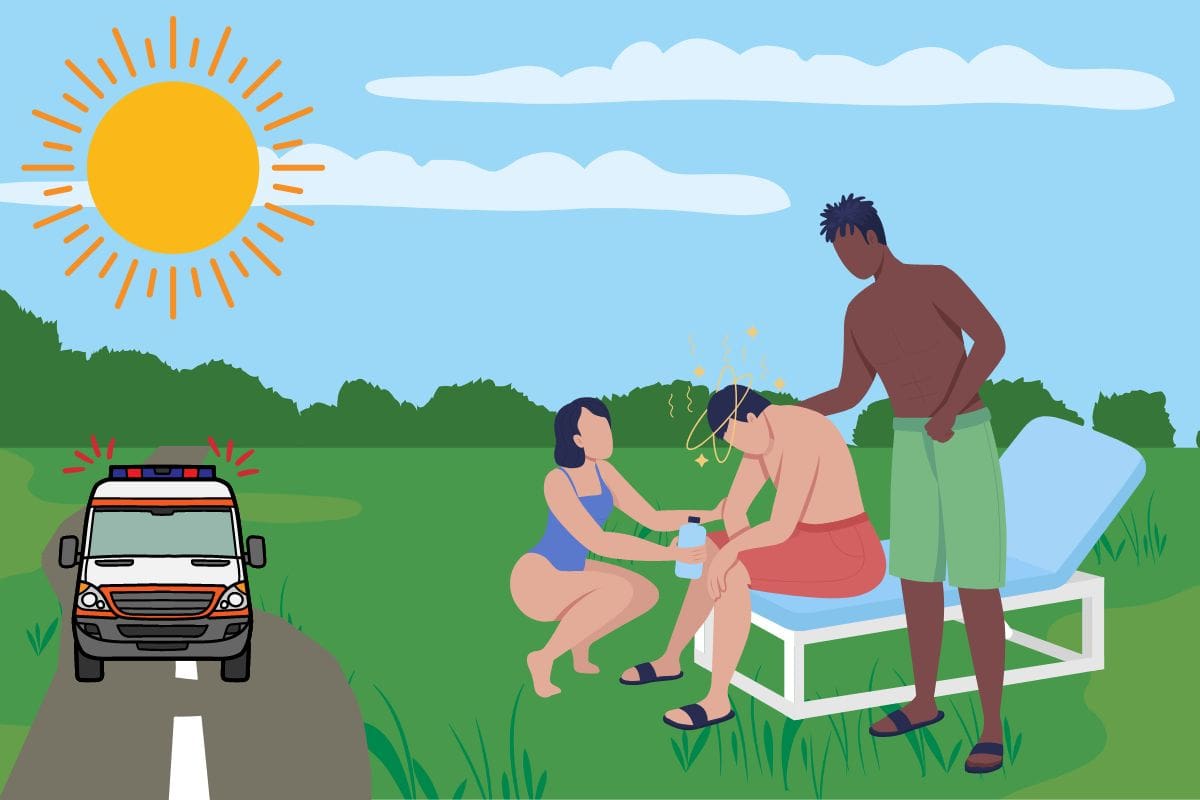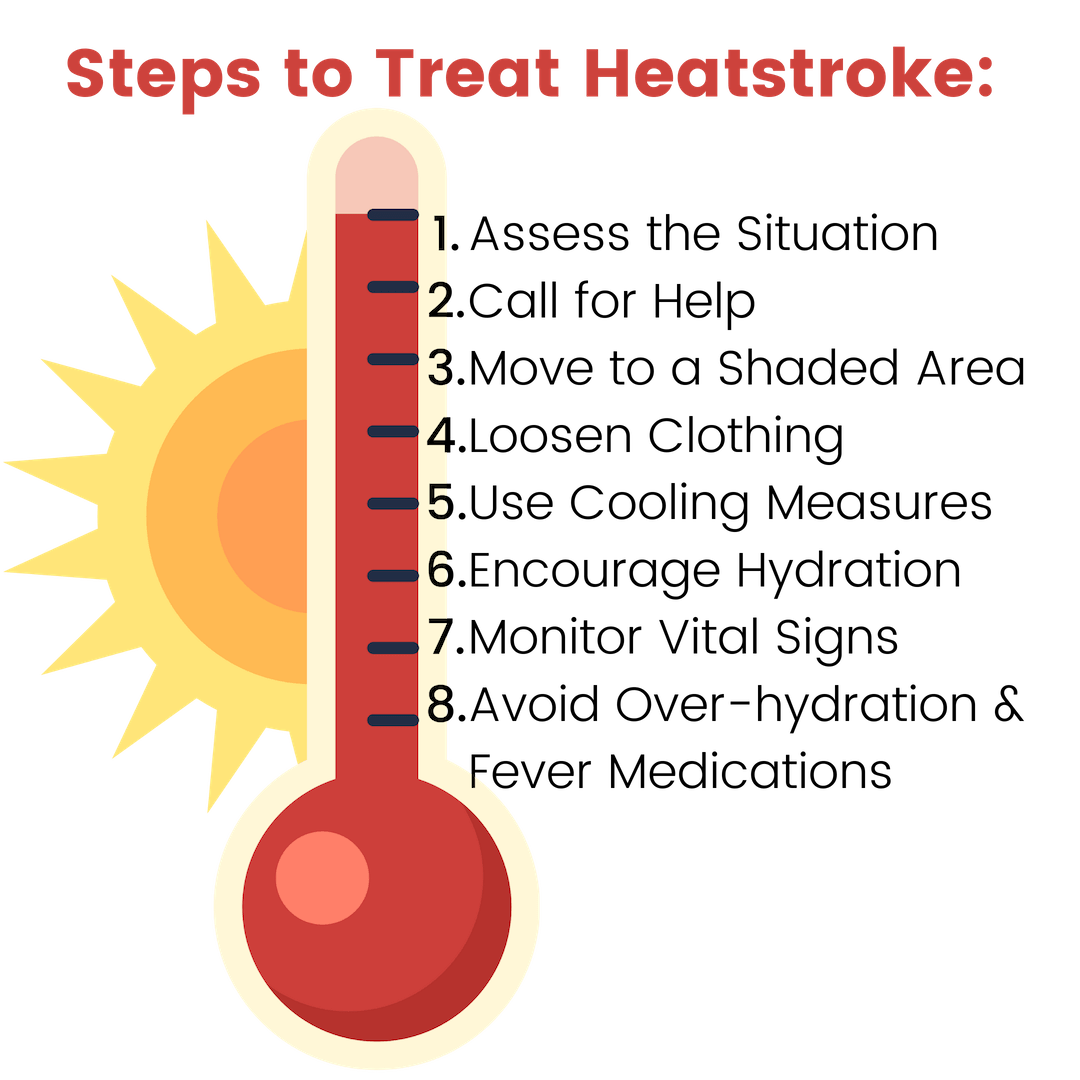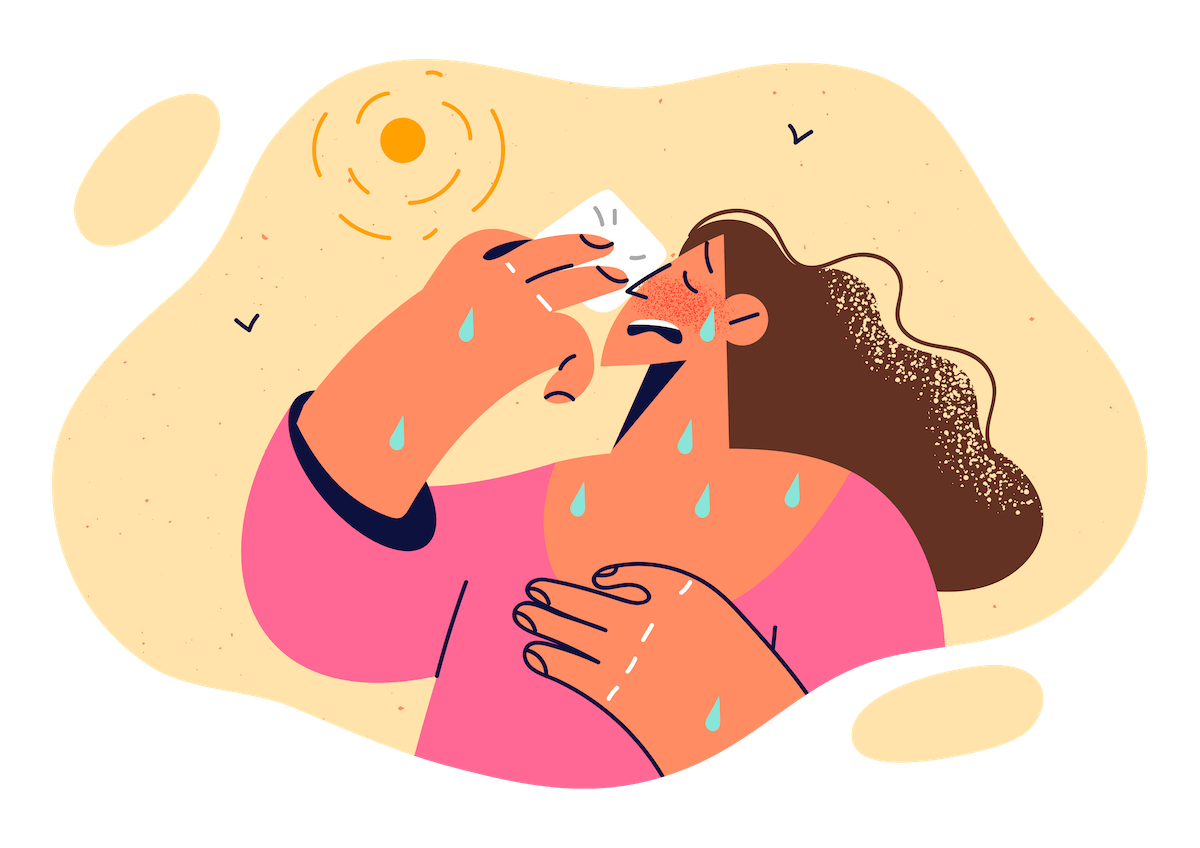
Summer is here...and so is the heat, in full force. The first week of July was the hottest week on record, data shows. As scorching temperatures sweep across the globe, an unprecedented heatwave is testing the endurance of communities. This year's extreme heat demands us to be extra careful and address the life-threatening nature of heatstroke, as well as how to identify when it becomes an emergency.
Now, here's the deal: heatstroke is no joke. It's a serious and potentially fatal condition when our bodies can't handle the intense heat, causing our internal temperature to rise and then be unable to cool down properly. With outdoor temperatures going way higher than usual, the risk of heatstroke has risen significantly.
Let’s learn how to recognize, treat, and prevent heatstroke during this "heat-astrophe.”
What is heatstroke?
Heatstroke is when our body's temperature regulation system fails to cope with intense heat, causing the body temperature to rise dangerously high, up to 106°F or higher within 10 to 15 minutes.
To better understand heatstroke, let’s break down what happens when our bodies are faced with scorching temperatures.
First and foremost, our body will kick into action to cool down and attempt to maintain a safe internal balance. The most common response is sweating – our sweat glands work overtime, releasing moisture onto the skin's surface. As this sweat evaporates, it whisks away heat from our bodies, providing a natural cooling effect.
Additionally, blood vessels near the skin's surface dilate through vasodilation, allowing more blood to flow close to the skin. This helps release heat into the environment, keeping us cooler. Our heart rate increases, pumping blood more efficiently, while our breathing rate may rise to expel warm air and bring in cooler air. These responses, controlled by the brain's thermoregulatory center, work together to combat the heat.
However, in extreme heat situations, these mechanisms can falter, leading to heatstroke.
How do you spot heatstroke?
Differentiating between heatstroke, heat cramps, and heat exhaustion is essential for your safety in hot weather. Heat cramps are painful muscle spasms caused by sweating and dehydration, typically in the legs and abdomen. Heat exhaustion results from excessive heat and dehydration, leading to symptoms like heavy sweating, weakness, and dizziness. Both heat cramps and heat exhaustion can be recognized by moist, pale, normal-to-cool skin, and are not life-threatening if properly treated.
On the other hand, heatstroke results in hot, dry, or possibly moist skin, and can cause serious issues if left untreated. Heatstroke has clear indications that differentiate it from other heat-related illnesses. Here are the signs and symptoms of heatstroke that you should become familiar with:
- Very high body temperature
- Altered mental state (slurred speech, confusion, etc.)
- Unconsciousness (coma)
- Seizures
- Heavy sweating or hot, dry skin
- Headache
- Rapid heart rate
For context, these are normal resting heart rates:
- Toddlers (1-3 years): 98-140bpm
- School-age (5-12 years): 75-118 bpm
- Adults (18+ years): 60-100 bpm
Recognizing the warning signs and acting promptly can be the difference between life and death in heat-related emergencies.
What to do when encountering heatstroke?
Encountering a suspected heatstroke case can be alarming, and taking quick and appropriate action is crucial for someone’s well-being. Here are some instructions that the CDC and Cleveland Clinic recommend in order to respond effectively:

- Assess the Situation: Approach the individual carefully. If you suspect heatstroke, it's essential to act swiftly.
- Call for Help: Dial emergency services immediately (911 or your country's emergency number). Provide clear and accurate information about the person's condition and location.
- Move to a Shaded Area: If possible, carefully move them to a cool and shaded spot away from direct sunlight. Avoid any physical strain or unnecessary movements.
- Loosen Clothing: Gently loosen or remove any tight or excess clothing to help the person cool down.
- Use Cooling Measures: Use whatever resources are available to cool them down while waiting for professional help to arrive. Here are some cooling techniques:
- Apply cool, wet cloths or towels to their skin, especially the neck, armpits, and groin areas.
- Use a fan to increase air circulation and promote evaporation of sweat.
- Mist or spray the person with water, if available.
- Encourage Hydration: If they are conscious and alert, offer cool water to drink in small sips. Avoid giving them cold beverages too quickly.
- Monitor Vital Signs: Keep an eye on their vital signs, such as breathing rate and heart rate. Stay with them and offer reassurance until emergency responders arrive.
- Begin CPR if the person loses consciousness and shows no signs of circulation (such as breathing, movement, or coughing).
- Avoid Certain Actions: It's essential not to:
- Attempt to force them to drink large amounts of water.
- Give the person medications, such as aspirin or acetaminophen, unless advised by medical professionals.
Remember, heatstroke is a medical emergency, and professional medical assistance is necessary. Your quick response and support can make a major difference in someone’s outcome.

How can you prevent heatstroke?
The relentless heat wave is definitely testing our endurance, making it challenging to escape the extreme temperatures. However, there are still effective and practical ways to protect ourselves from heatstroke and other heat-related illness. Here are some tips:
- Stay Hydrated: You should mostly drink water, but if you are excessively sweating–or exercising in the heat–be sure to include some electrolyte replacements as well.
- Alcohol is not your friend in this, because it tends to dehydrate you further.
- Wear Appropriate Clothing: Opt for loose-fitting, lightweight, and light-colored garments to allow better air circulation and to allow sweat to evaporate.
- Limit Outdoor Activities: While we may love spending time outdoors, it's wise to limit strenuous activities during the hottest parts of the day, usually from late morning to early afternoon.
- Seek Shade or Air-Conditioning: When outdoors, find shaded areas to rest and cool down. If available, spend time in air-conditioned spaces to escape the heat.
- Use Cooling Products: Consider using cooling towels, fans, or misting devices to help lower body temperature during extreme heat.
- Acclimate Gradually: If you're not accustomed to high temperatures, take it easy during the first few days of exposure to allow your body to adjust and adapt.
- Never Leave Children or Pets in Cars: Temperatures inside a parked car can skyrocket quickly, leading to life-threatening conditions. Never leave anyone unattended in a vehicle, even for a short time.

Conclusion
As we make the most of the sizzling days this summer, let's not underestimate the seriousness of scorching heat waves. The record-breaking temperatures demand our utmost attention, especially when it comes to heatstroke. This life-threatening condition can affect anyone, so let's be proactive in protecting ourselves and those around us from it.
Let's beat the heat together and ensure a safe and enjoyable summer for everyone! Stay cool 😎






